- Home
- Larry McMurtry
The Colonel and Little Missie Page 14
The Colonel and Little Missie Read online
Page 14
* There were normally three shooting acts per show: Annie’s, Lillian Smith’s, and Johnny Baker’s. Captain Adam Bogardus had been Cody’s first sharpshooter. His decision to go on his own prompted Annie’s famous audition in Louisville. “She’s a daisy!” Salsbury reportedly said. “She’ll easily put Bogardus in the shade.”
3
WHY human beings like what they like or, to put it more strongly, obsess over what they’re obsessed with, remains—despite much psychological commentary—a mystery. There’s just no accounting for taste, and no way to know why Annie Oakley liked guns so much and mastered them so easily.
But like them she did. Her creation myth, to be put beside Cody’s first Indian, involved a squirrel that lingered on the family fence too long, until Annie managed to pull down her father’s big muzzle-loading rifle, propped it on the windowsill, and shot the squirrel right through the head. She always claimed that it was one of the better shots she ever made.
There is a somewhat less romantic version of Annie Oakley’s first shot—in this version her brother hands her a shotgun, hoping the kick will discourage her and stop her from pestering him about guns. The kick breaks her nose but of course she brings down the bird.
The old muzzle-loading gun was much too heavy for Annie, but she did her best, often depending on snares and traps of various kinds to help her secure rabbits and quail. From the first she seems to have had absolute confidence in her shooting; she kept this confidence all her life. Ted Williams and Joe DiMaggio were said to be the exceptional hitters that they were because their eyesight was so keen that they could see the seams of the baseball as it came toward them. Perhaps Annie Oakley too had better eyesight than most. She gave many shooting clinics once she left Cody’s tour; she taught her students correct posture and the importance of an easy swing; her teachings made it all sound simple—indeed, almost Zenlike: “You must have your mind, your nerve, and everything in harmony. Don’t look at your gun, simply follow the object with the end of it, as if the tip of your barrel was the point of your finger.”
She herself never seemed so clearly in a state of harmony as when she was shooting her gun. Many opponents observed this. Somehow she remained supremely ladylike when firing a rifle or shotgun, weapons which had largely been the domain of the male until she came along. During her first English tour she had her worst day of shooting ever, trying to hit a swift variety of pigeons called blue rocks. The shoot was held at a gentlemen’s shooting club. Annie, shooting a gun that was too heavy, with shot too light for the windy weather, only managed to hit five pigeons out of twenty, a deep embarrassment for her. But the gentleman who managed the club, who had not been impressed with Lillian Smith, was impressed with Annie. He told her that she was much less of a shot than he expected, but much more of a lady.
A fine English gunsmith named Charles Lancaster was there that day, and at once figured out what was wrong. He persuaded Annie to let him make her a lighter gun, a twelve-gauge that only weighed six pounds. Before she left England she tried the blue rocks several more times, eventually managing to bring down forty-one out of fifty.
But this is to get far ahead of the story. The shotgun the Greenville grocers gave Annie was a Parker sixteen-gauge, as good a shotgun as could be had in America at that time. They also gave her a tin of high-grade gunpowder, a gift so unexpected that it was some weeks before she could bring herself to open the can. These gifts changed Annie from being merely a somewhat bohemian wood sprite into a shooter with a future. She repaid their kindness by shipping them game that had been meticulously cleaned and packed—soon they were relaying some of it to high-end restaurants in Cincinnati. With the grocer’s encouragement, she soon began to enter shooting matches. She entered and she won.
In the late 1870s such matches abounded. Sharpshooters traveled from town to town and hamlet to hamlet, rather as pool sharks were later to do, eager to take on the local champion and perhaps win a few dollars. The shoots were advertised in the local papers and were commonly well attended, there being little else to be enjoyed in the way of entertainment in the Ohio woods in those days.
Frank Butler was an Irishman with a good deal of confidence in his shooting, but on this occasion, the fact that his opponent was a mere slip of a girl, dressed in knickerbockers, seems to have unnerved him. Annie beat him, hitting twenty-three pigeons to his twenty-one—other accounts say that she only beat him by one bird.
She not only beat him, she won him. The romantic progress of little Phoebe Moses and the dapper Frank Butler is somewhat clouded, but one way or another, there was a courtship, followed by a marriage that was to last a lifetime. Exactly when and where they married is disputed. Frank Butler was in the process of getting a divorce—it may be that legal complications caused Annie and Frank to fudge matters a little. They were married in 1882, when Annie was twenty-two; the newlyweds then traveled the variety circuit for some three years, shooting wherever they could find a match, or a weekend’s engagement. They were, for a while, a shooting team, but Frank soon dropped into a managerial role, securing bookings and trying to establish his wife in what was a very crowded field. Trick shots and sharpshooters of all stamps were thick on the ground. The young couple stayed in theatrical boardinghouses and traveled as cheaply as possible. They were young, of course, and resilient, but Annie’s years as a slave to the “wolves” were not forgotten: to the end of her life it bothered her to turn down work; probably she never fully believed that she could afford to turn down work. Long after her retirement from Cody’s show she appeared more than once in Tony Pastor’s Opera House, headlining a bill that included Samson, the Strongest Man on Earth, as well as the Ossified Man, whose torso gave back a stony sound when struck with a hammer; beside these attractions there was the Elastic Skin Lady, contortionist extraordinary, a one-armed juggler, and a troop of musicians. It was, in other words, a freak show, but, just to be on the safe side, Annie did the show and banked the money. She had already starred in The Western Girl, a stage melodrama not much better than some of those Bill Cody had once starred in.
By this time, with the glories of Europe behind them and thousands of shows under their belt, Frank Butler might have been inclined to give a real and final farewell performance—a farewell performance that took, unlike Colonel Cody’s.
Annie had no very strong objection to Frank’s desire for more time to fish and hunt, but her strongest instinct was never to turn down work. Even after her car wreck in 1922 she was not entirely ready to put a period to her career.
4
IN her long life as a performer Annie Oakley is said to have missed only five performances due to illness. Four of these missed shows occurred early in the troupe’s stand on Staten Island, after a bug crawled into her ear while she was asleep. Various doctors thought they had flushed the bug, but all failed. For a few days, just as the troupe was girding up for the big opening day parade in Manhattan, Annie Oakley, instead of getting better, got worse. Oils, leeches, everything was tried, but nothing worked—for a time it seemed as if her rival, Lillian Smith, would be in the parade, but not her. Annie had already lopped six years off her age because of this troublesome teenager: the thought that Lillian Smith might upstage her before all New York was too much.
The train carrying most of the troupe had already left, but Annie ordered her horse saddled, changed clothes while this was happening, and raced off to catch the train, which she did. The parade was a long one, but at least she was in it. By the time it ended she was too weak to dismount. Salsbury ordered the best doctors and the ear was finally lanced, but the verdict was blood poisoning. For the next four days, while Buffalo Bill’s Wild West packed the ferries and the trains, Annie Oakley lay close to death. But on the fifth day, she showed signs of life and by showtime was ready to perform, although with a heavily bandaged ear.
The long stay on Staten Island left Annie plenty of time in which to develop new acts. Her immediate ambition was fueled by her intense desire to outdo Lillian Smi
th, the young California sharpshooter whose mere presence on the lot irritated Annie to an extreme. Whatever nice things she said about Cody later, it’s not clear that she ever forgave him for bringing Lillian Smith into the troupe.
Lillian Smith was billed as a rapid-fire shooter; she broke innumerable glass balls or plates in quick succession. Insofar as there was a division of labor in this early stage of the show’s evolution, Lillian Smith was the rifle shot, Annie Oakley the genius of the shotgun. Annie, who could shoot either weapon proficiently, decided to up the ante by developing acts in which she herself was in motion. She shot while riding a bicycle, and then moved on to horses. Frank was skeptical and Salsbury fearful but Annie soon became an excellent horsewoman. She shot lying full-length on her horse’s back, and even learned to shoot standing up on her mount. The fact that she was shooting birdshot out of a smoothbore gun helped a lot when it came to breaking glass balls; but even the great Cody used a smoothbore gun when he shot his glass balls. (Cody and Doc Carver did at first use bullets but the result was too many broken windows from houses several blocks away.)
During this relatively settled period on Staten Island, Cody, Salsbury, and Major Burke had time to give some thought to what lay ahead. They had already committed themselves to go to England and perform at Queen Victoria’s Golden Jubilee; they were in the midst of their most successful season ever, and yet Cody already felt the need for more. There were too many shows in the field. Pawnee Bill would soon have a good one up and running, and old Barnum himself was not finished.
Cody’s insight, at this juncture, was that mere “combinations,” however star-studded, weren’t going to satisfy audiences much longer. It was fine to have Annie Oakley and a couple of other sharpshooters; fine to have buffalo, Indians, cowboys, trick ropers, a brass band, and so on. Some of the skits from his own frontier experience—the Pony Express, the attack on the settler’s cabin, or the Deadwood stage—were fine skits; they provided the audience with at least a whiff of the Wild West. But Cody wanted more narrative—he always wanted more narrative, even though it would be narrative in its broadest, crudest form.
What he didn’t want was a show that was merely an advanced form of rodeo, with the safest acts (like the grand entry) first and the more dangerous acts, like bronc busting, later.
What Cody wanted was a theme; and since he was about to go international, the broader the theme, the better. The concept he came up with, after much brainstorming with Salsbury and Burke, was the broadest theme possible: civilization itself.
At first blush this sounds ridiculous. How could a bunch of poorly educated scouts and actors pretend to enact the drama of the advance of civilization—and yet that is exactly what they proceeded to attempt.
Already, too, Cody was looking to the day when more and more performances would be held indoors, in vast sports palaces, which would protect them from debacles such as the forty-four days of rain in New Orleans. As it happened, a promising venue lay just across the way: Madison Square Garden, where Salsbury had already arranged a short run just before the troupe departed for England.
Already Major Burke’s press books were growing longer and more elaborate—the one for the great Chicago Exposition of 1893 would be sixty-four pages long. Buffalo Bill’s Wild West was publishing its own history, even as it made it.
By the time the show ended its successful run on Staten Island and prepared to move into town, the new concept under which they all were to labor had been finalized. Buffalo Bill’s Wild West would be presenting nothing less ambitious than the Drama of Civilization, beginning deep in the primeval forest and bouncing forward in great leaps.
Where the Drama of Civilization was concerned, Annie Oakley kept her thoughts to herself. Her part in the drama, in any case, was just to keep breaking glass balls. The worst time she had in Manhattan was when the company’s pet moose, Jerry, who had been trained to pull a cart, could not resist the smell of a big pile of nice juicy apples on a vendor’s stand. The vendor was not pleased to have his stock ravished by a moose—Little Missie had to fork over $5 in order to make peace with the man.
Grandmother England
1
BUFFALO BILL’S Wild West went to England in Queen Victoria’s Jubilee year ostensibly to add a little flavor to a big American trade fair, which was already open in Earl’s Court, though receiving little attention. It never did garner much attention. The big troupe of wild Westerners soon sucked away what few visitors the trade show had managed to attract. The tail immediately began to wag the dog: the American Exposition was a big flop, and Buffalo Bill’s Wild West an enormous success, playing to some two and a half million people before moving on to shorter runs in Manchester and Birmingham. The enormous turnout was still just enough to save Cody and Salsbury’s financial bacon due to the expense of the huge troupe they brought over, a full count of which is hard to come by. There were 97 Indians, 160 horses, 16 buffalo, a couple of bears, elk, deer, and of course, scores of performers and stagehands.
Among the Indians making the trip, besides Black Elk and the popular Red Shirt, were Mr. and Mrs. Walking Buffalo, Mr. and Mrs. Eagle Horse, Moccasin Tom, Blue Rainbow, Iron Good Voice, Mr. and Mrs. Cut Meat, and Double Wound, to give only a very abbreviated list. Were this not enough, the bushy-bearded John Y. Nelson managed with his wife to produce a fine papoose along the way, a little boy much appreciated by the royal family. There was also a thirty-six-piece band.
In general the Indians trusted Pahaska (sometimes Pawhaska) Cody, but were nonetheless apprehensive about crossing the Big Water; going behind the sunrise, as they saw it, could not be a good idea. It was a rough crossing, too; some thought they were doomed—more than one death song floated up from the underdeck. Almost everyone got seasick, though Annie Oakley didn’t. There was much rejoicing when the State of Nebraska finally reached the Albert Dock. Major Burke, of course, was there ahead of them, doing the same things that press agents do now: securing advertising, setting up interviews, and so forth.
Annie Oakley was soon secure in her snug, nicely carpeted tent—she quickly found that she liked English ways and said more than once that if it had not been for the need to see her old and ailing mother, she would have been well content to make England her home.
Because it was Grandmother England’s—the Indians’ name for Queen Victoria—Jubilee year, much of the world’s royalty (to which, in many cases, she was literally the grandmother) stayed in or at least passed through London while the Wild West was performing. The future Kaiser Wilhelm II was there, as well as Crown Prince Rudolf of Austria, who was soon to die by his own hand in the tragic suicide at Mayerling. Almost everyone loved the show, although there were a few sourpusses, one of them being the poet James Russell Lowell, who had recently been our minister to the Court of St. James. Lowell was much too high-minded for such populist entertainment, attributing the show’s immense success to “the dullness of the average English mind.”
One night there were no fewer than twenty royals crammed into the royal box, among whom were the four kings who would soon find themselves careering around the arena in the Deadwood stage.
The one person who liked the wildly successful Wild West even less than James Russell Lowell was George Sanger, head of the largest and best-established English circus company, from whom Cody drained spectators as easily as he had from the big trade fair. Indeed, throughout the whole six-month run there was hardly a day when Cody’s name did not appear in the London newspapers, where he was usually referred to as the Honorable William F. Cody. Aware that the English might be picky about titles, Cody had come prepared with a sheaf of testimonials from many military men; he had even persuaded the governor of Nebraska to make him a colonel, though exactly what unit he was supposed to be colonel of was not easy to say.
George Sanger was so annoyed at constantly seeing Cody referred to as “the Honorable” that he summarily added an “Honorable” to his own name.
Very fortunately for Mr. Sanger, Queen Vi
ctoria, upon being informed of George Sanger’s aggressive act, decided in this instance to be amused.
2
FROM the viewpoint of the Honorable George Sanger, the circumstance that most added insult to injury where Cody was concerned, was the fact the one person who did the most to siphon customers to Buffalo Bill’s Wild West was his own sovereign, Queen Victoria. Major John Burke could have labored in the English pressrooms for years without securing as much good publicity for the show as the queen did merely by agreeing to attend.
Queen Victoria’s appearance at their London show was the greatest stroke of luck Cody and Salsbury were to have on any of their European outings. Grandmother England to the Indians, she was, as I have said, literally grandmother to most of the sitting royalty of Europe. Both the soon-to-be Kaiser Wilhelm II of Germany and the soon-enough-to-be Tsar Nicholas II of Russia were her grandsons, and there were many more grandchildren scattered through lesser duchies and states.
What made Victoria’s appearance at a command performance in Earl’s Court so extraordinary was that she had remained in mourning for twenty-six of her fifty years as queen—in mourning for her beloved husband, Albert. Until Cody and the Wild West came along, if the queen wanted to see a play or a revue, the players came to her, usually at Windsor Castle, where they performed in her own theater.

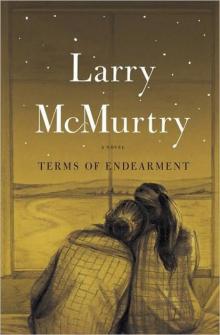 Terms of Endearment
Terms of Endearment Some Can Whistle
Some Can Whistle All My Friends Are Going to Be Strangers
All My Friends Are Going to Be Strangers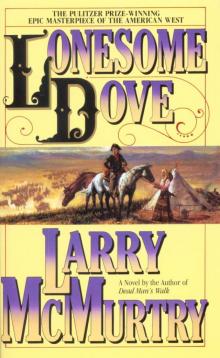 Lonesome Dove
Lonesome Dove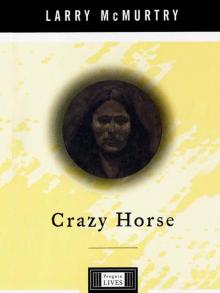 Crazy Horse: A Life
Crazy Horse: A Life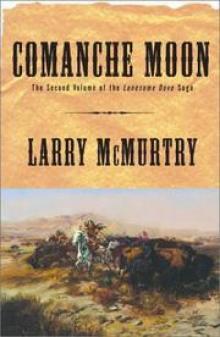 Comanche Moon
Comanche Moon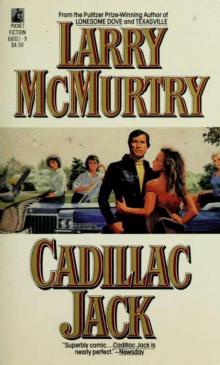 Cadillac Jack
Cadillac Jack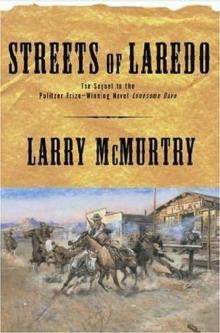 Streets of Laredo
Streets of Laredo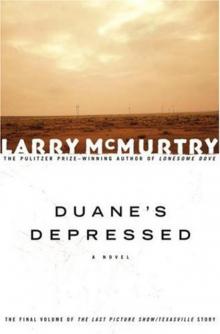 Duane's Depressed
Duane's Depressed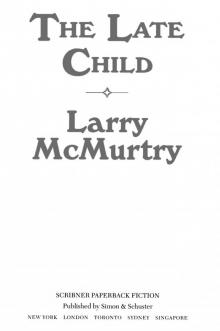 The Late Child
The Late Child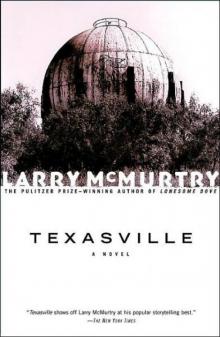 Texasville
Texasville Rhino Ranch
Rhino Ranch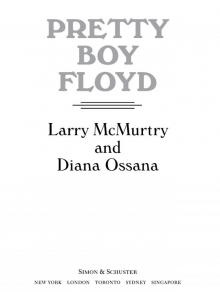 Pretty Boy Floyd
Pretty Boy Floyd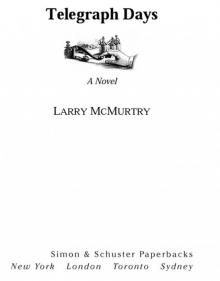 Telegraph Days
Telegraph Days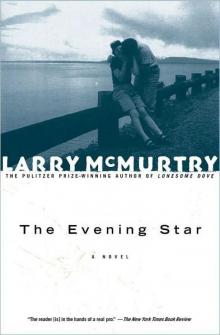 The Evening Star
The Evening Star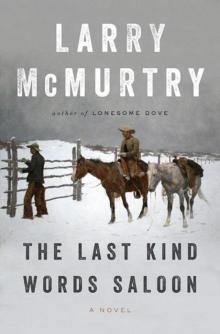 The Last Kind Words Saloon
The Last Kind Words Saloon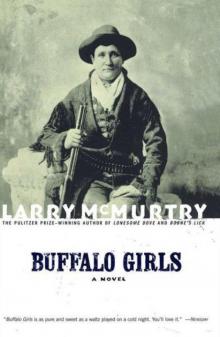 Buffalo Girls
Buffalo Girls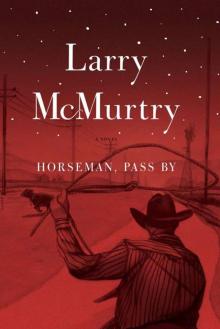 Horseman, Pass By
Horseman, Pass By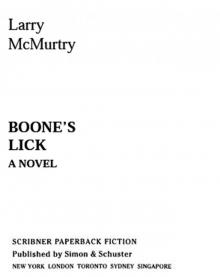 Boone's Lick
Boone's Lick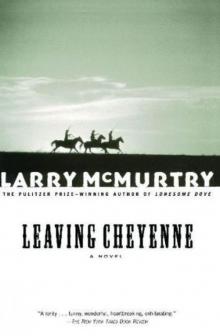 Leaving Cheyenne
Leaving Cheyenne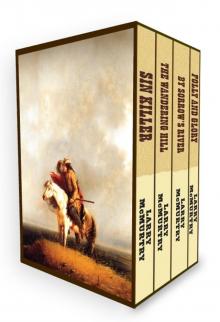 Sin Killer
Sin Killer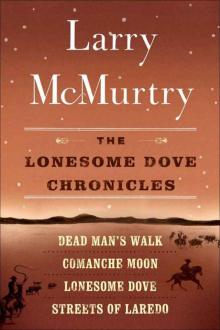 The Lonesome Dove Chronicles (1-4)
The Lonesome Dove Chronicles (1-4)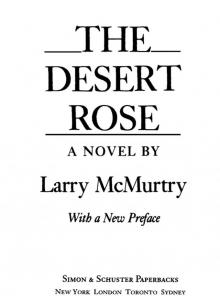 The Desert Rose
The Desert Rose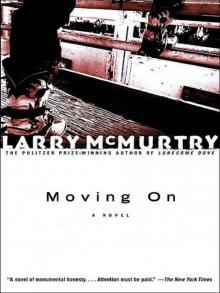 Moving On
Moving On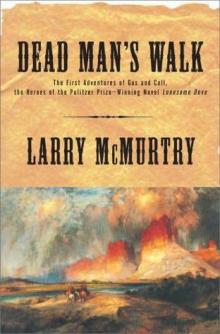 Dead Man's Walk
Dead Man's Walk The Last Picture Show
The Last Picture Show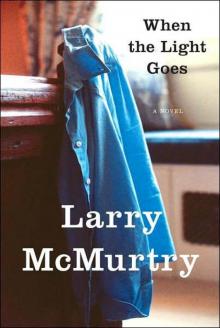 When the Light Goes
When the Light Goes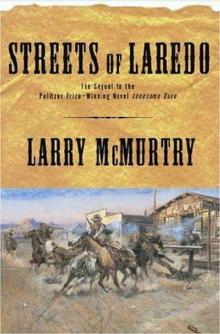 Streets Of Laredo ld-2
Streets Of Laredo ld-2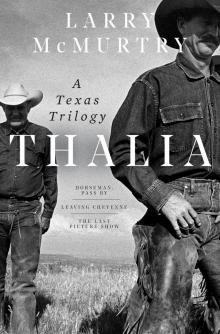 Thalia
Thalia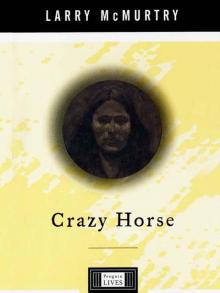 Crazy Horse
Crazy Horse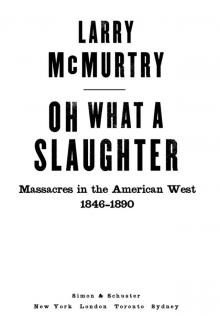 Oh What a Slaughter
Oh What a Slaughter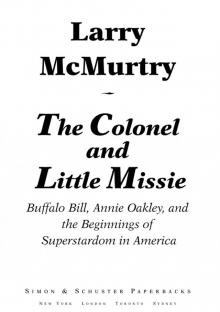 The Colonel and Little Missie
The Colonel and Little Missie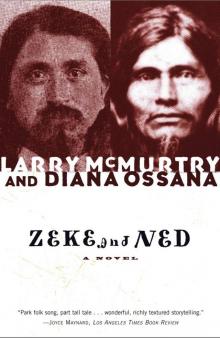 Zeke and Ned
Zeke and Ned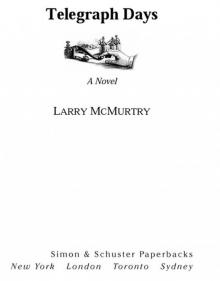 Telegraph Days: A Novel
Telegraph Days: A Novel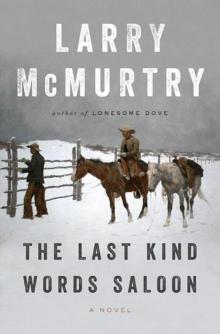 The Last Kind Words Saloon: A Novel
The Last Kind Words Saloon: A Novel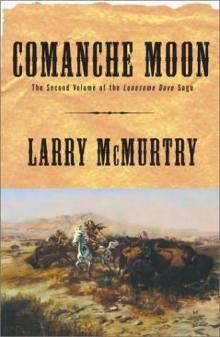 Comanche Moon ld-4
Comanche Moon ld-4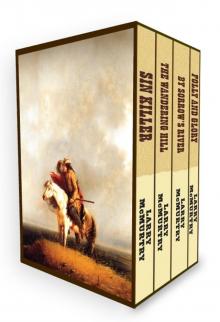 The Berrybender Narratives
The Berrybender Narratives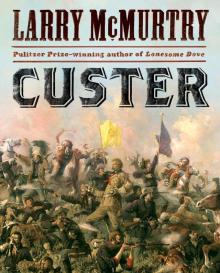 Custer
Custer